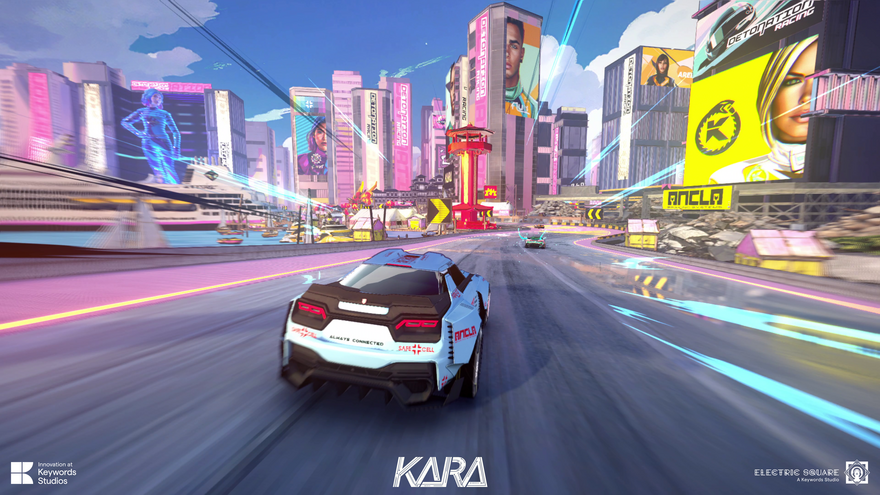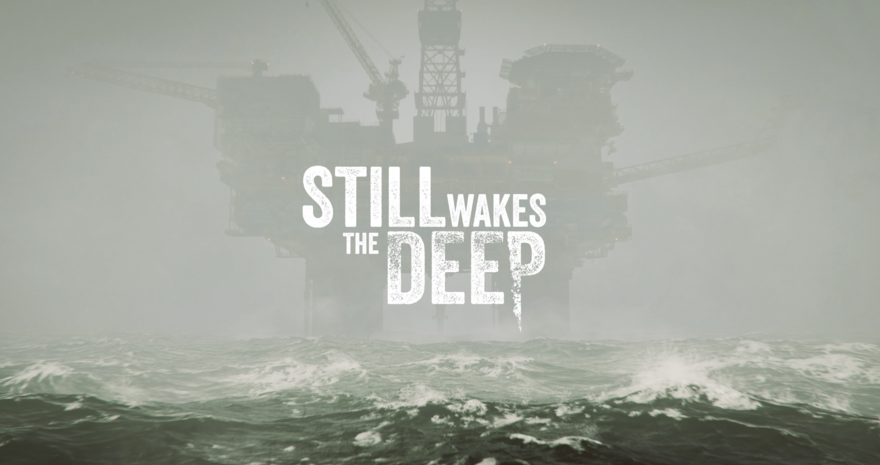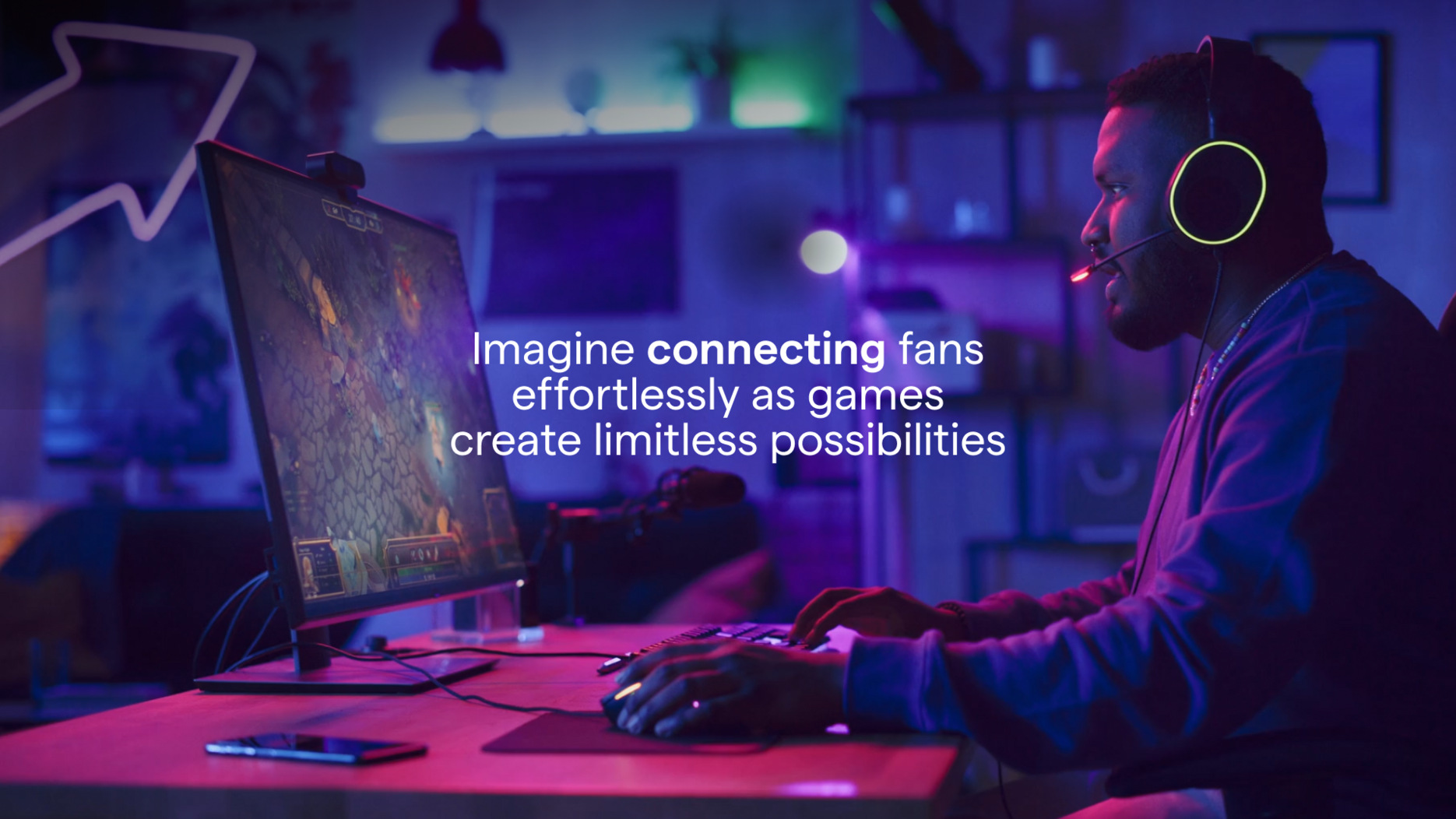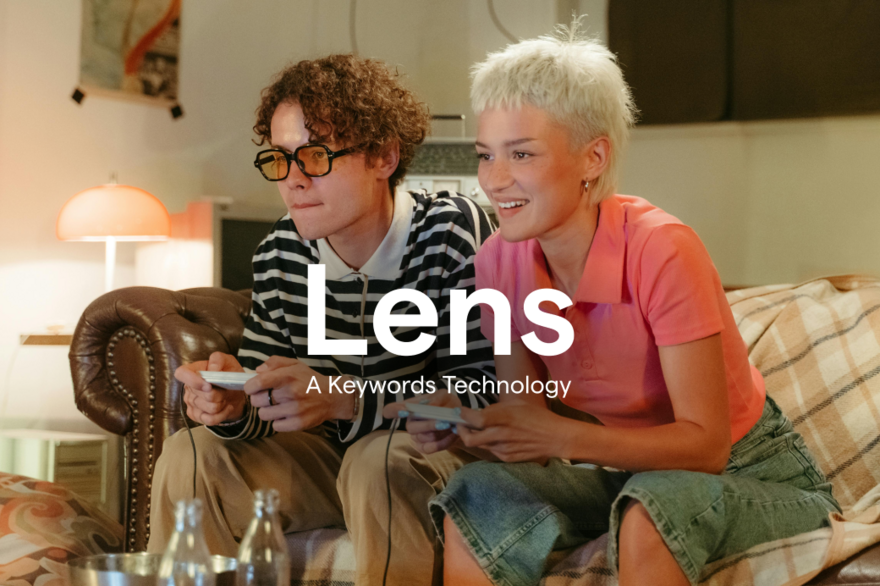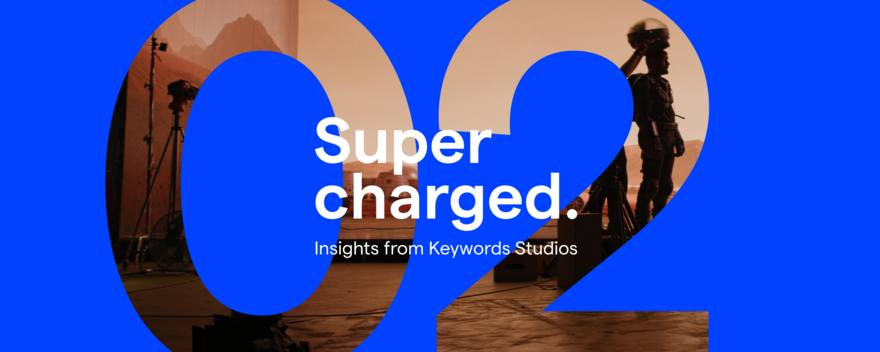
02: Fan First
Fan First
Welcome to Supercharged: Insights from Keywords Studios, our quarterly newsletter.
In a rapidly evolving industry, the need for sharper insight and a broader lens has never been more critical. Supercharged is your inside scoop, drawing from our global vantage point across the full game content lifecycle to explore what’s next and what matters most.
Each edition brings together trends, ideas, and strategies that cut across disciplines and markets. This isn’t just observation; it’s actionable intelligence from the front lines of video games and media and entertainment.
We open with a theme at the heart of today’s most successful launches: Fan First.
This quarter’s edition is authored by James Gallagher, Head of Community Management at Keywords Studios, bringing 20 years of expertise in how communities are formed, nurtured, and mobilised.
In an age of distributed influence and player-powered discovery, fandom has become a living ecosystem, sprawling, dynamic, and often beyond brand control. To succeed, studios must go where fans are, speak their language, and share their spaces. This issue explores how to engage authentically, build resonance, and grow communities that truly move the needle.
“Fandom isn’t just about liking something, it’s about belonging. It transforms audiences into communities, and communities into movements.”
Henry Jenkins
Let’s rethink what it means to lead with and listen to, the fan.
Welcome to Supercharged: Insights from Keywords Studios
"The Fans are the reason we're here"
James Gallagher
Tapping into the Full Fandom Ecosystem
Launching channels, creating content, cultivating spaces for a community to grow are the activities most readily associated with community management and social marketing.
And while owned channels are a vital part of the marketing mix for a game or entertainment release, fandoms are complex ecosystems stretching beyond our direct control.
Fans are creators, influencers, and advocates who connect, share, and celebrate games across the digital landscape. The true heart of fandom beats far beyond your own spaces. Brands need to venture outward, embracing fan-driven communities, partnering authentically with influencers, and becoming an active, genuine presence in places they don't control but can deeply influence.
Let’s explore how to map the ecosystem for your game or entertainment property, and some of the methods to grow fandom and shape sentiment.

Mapping the Ecosystem
The greatest concentration of fandom is found on the most popular social networks. These networks each have their own specific operating models that lean towards specific user desires, which we can reference when building a strategy for how best to work with them.
Across these networks there can be hundreds, if not thousands, of accounts dedicated to a popular IP, ranging from official brand accounts to a massive array of external accounts that include:
- Content creators focused on your IP or genre
- Fan-managed communities that are either general, or dedicated to a certain niche within the IP
- Fan collectives such as Guilds or eSports teams
To further map our ecosystem, we can organise these accounts into categories based on their relationship to the brand, purpose to the fans, and what we have in our toolbox to shape them.

Measuring the Ecosystem
Once you understand the ecosystem from owned channels out to earned channels and social conversation, you can start to measure these spaces in terms of:
- How many people are they reaching?
- What is the profile of people in each space?
- What is the general sentiment towards the game in each space?
This can be a major undertaking for a big title, and there are plenty of paid social listening tools available to help you track and measure where your product is being talked about online.
These tools tend to focus on something specific – a channel like Twitch or features such as sentiment analysis. When reviewing tools, be sure to check that it covers the channels you want to track.
However, it is possible to compile the information manually with a simple spreadsheet and some free online resources (which can be replaced or supplemented with paid tools you may already have):

It can be time consuming but the research process itself will give you a deeper understanding of what’s out there, and what’s being discussed.
Free resources to help gather the information include:
- Discord: Disboard, top.gg
- Twitch: Sullygnome
- X: Advanced Search
- Reddit: Google site:reddit.com "your brand"
- TikTok: Creative Centre
You can use your visualization tool of choice to map the ecosystem by size. I personally enjoy a bubble chart showing the estimated reach of segments from owned to earned. If your community team is spending ~70% of their time on earned channels, seeing this view might be a prompt to change that and spend more time cultivating relationships with community builders and content creators at the Earned end of the scale.

Partnered
Staff / Talent Accounts: Your colleagues and talent your company has worked with, such as voice actors.
Brand Partnerships: Partners, such as retailers, first-parties and IP-holders, have social accounts and will be looking for content opportunities for their fans. Talk to social media managers at these companies and they’ll tell you that their inboxes are filled with partners asking for help promoting their announcement or release. Think about how you can provide content that brings specific value to their audience. For example, if you have an opportunity to pitch content to the social teams at PlayStation or Xbox, find a unique angle that is tailored to those audiences, whether it’s focusing on Trophies and Achievement for your game, or other platform-specific features.
If you’re working with a manufacturer of PC hardware, talk in detail about how your game is optimised for a range of systems or uses the latest technology to get on the same page with that engaged audience.

Earned
Fan Groups: It can be tempting to create a @brand_official handle and start chatting to fans on Discord servers and subreddits. This is a risky plan. Fans will be sceptical of the trustworthiness of this account and may not even welcome corporate intervention into a space that they’ve created for themselves.
It’s much better to introduce yourself to the owner of the space and ask if they would be open to collaboration.
They may give you some pointers on what the community needs, and extend an introduction to help you start to gain trust.
Content Creators: Your social strategy should include a plan for earned creators and may include paid influencer activations for key moments.
Earned Creators are those streamers and content creators that could pick up and cover your product organically. The keys to motivating these creators to create more brand-positive content are relationship and value.
Relationship is the art of building a human link between brand and creator. Creators appreciate having a real person at the company that they can reach out to if they need anything, or want to share ideas or feedback.

Value is the fuel that makes sure the relationship doesn’t fizzle out. Most creators have ambitions to grow their audience, and the brand has resources that can help them achieve those goals. Options include:
- Sneak peeks of new content
- Game keys or currency for Twitch drops
- Additional b-roll to support asset releases
- Opportunities to interview talent
- Invites to events
- Merchandise
Creator Programmes:
A Creator Programme evolves the principles or relationship and value into a live system.
The fundamentals remain: There needs to be a relatable point of contact for members of the programme, and a regular supply of value to keep creators invested (and for up and coming creators to aspire to be part of it).

The extra considerations for building a Creator Programme include:
Platform: Where will the programme live? Discord is a popular choice and there is a growing number of specialist platforms. We have a proprietary platform called Creator Lab for this purpose. Get in touch if you’d like a demo.
Criteria: What’s the checklist that creators will need to meet to be and remain a member of the programme? You’ll want to set the bar at a level that’s inclusive, but also represents an achievement for successful members. This may vary based on the size of the creator community for your game.
Vetting: Make sure you have guidelines for what members of the programme can and can’t include in their content. If your product is for a young audience you may want to prohibit bad language or alcohol reference. The goal isn’t to be censorial, but to have a reasonable agreement on what content can represent the brand through the validity that the programme provides.
You’ll need to make sure you have bandwidth to check social content of both new and ongoing members to make sure there isn’t anything that could reflect badly on the brand, either directly or by association.
And just to be clear: This shouldn’t be a ban on constructive criticism. Creators should be able to express authentic views, within reasonable limits of good partnership.
Reporting: As the Creator Programme scales you’ll want to keep meticulous records of membership, opportunities sent out to members, as well as content posted and all the supporting data around viewership, subscriber growth and audience sentiment.

Final Thoughts
Thinking beyond owned channels and building strategy for the full ecosystem of fandom can open your eyes to untapped opportunities – but it can be incredibly daunting.
Very few brands are able to consistently ace their approach to every part of the ecosystem.
But simply thinking about these spaces and the relative functions that they provide to fans can help you focus on where to have an impact, how to go about it, and how to measure that impact.
If any of these ideas have resonated with your marketing ambitions, we’d love to connect you with our strategists to unlock the potential of your fandoms.


Sign up to our quarterly newsletter.
Sign up to our quarterly newsletter and keep up to date with the latest in the industry.
